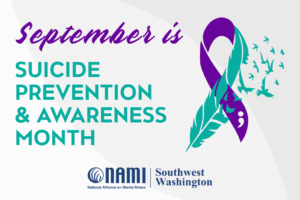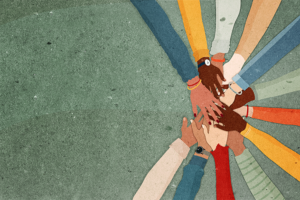Tardive dyskinesia (TD) is a neurological condition that affects countless individuals—yet too often, it remains misunderstood and shrouded in stigma. At NAMI Southwest Washington, we believe it’s time to raise awareness about TD, break down the barriers that prevent so many from getting the understanding and support they deserve, and empower individuals and their families with knowledge, compassion, and hope.
TD affects people from all walks of life and should not be viewed as a rare or isolated condition. It is crucial for communities, healthcare providers, and policymakers to work together to ensure that individuals with TD have access to resources, support, and treatment options. By creating inclusive environments where everyone feels valued and understood, we can reduce the stigma and create a world where individuals with TD can live with dignity and hope.
What is Tardive Dyskinesia?
Tardive dyskinesia is characterized by involuntary, repetitive body movements. These movements might include lip smacking, tongue protrusion, rapid blinking, grimacing, or jerking movements in the limbs or torso. TD is often a side effect of long-term use of certain antipsychotic medications prescribed to treat conditions such as schizophrenia, bipolar disorder, and severe depression. However, TD can also develop after withdrawal from these medications, and its severity can vary widely among individuals.
While the physical symptoms of TD are visible, the emotional and social impact is often hidden. Many people with TD experience profound embarrassment, anxiety, and isolation because of the reactions of others. Friends, family, and even strangers may not understand that these involuntary movements are a medical condition, not a behavioral issue. This misunderstanding can exacerbate the stigma and make it harder for individuals with TD to feel confident in public or in social settings. By expanding awareness and promoting understanding, we can reduce the stigma and support those living with TD.
The Stigma Around TD
Despite its medical nature, TD is frequently misunderstood. People with TD may be subjected to judgment, mockery, or even avoidance, with others wrongly assuming that the movements are intentional or within the person’s control. This stigma not only causes emotional harm but can also prevent individuals from seeking help, disclosing their condition, or adhering to necessary treatment plans. Moreover, this stigma can create profound isolation, impact relationships, and even discourage people from continuing their medications, which may exacerbate their condition. It’s important to recognize that TD is not the fault of the individual. It is a side effect of necessary medical treatment, and it does not reflect on a person’s character, intelligence, or abilities. By fostering compassion and awareness, we can create a more supportive environment where individuals with TD feel empowered to seek help and share their experiences.
Raising Awareness and Showing Support
Breaking the silence about tardive dyskinesia starts with education and empathy:
- Learn about TD: Understand what it is, how it presents, and the challenges faced by those living with it.
- Speak up: Share information and correct misconceptions when you hear them.
- Support without judgment: Show compassion and understanding to those with visible TD symptoms.
- Advocate for access to treatment: Support efforts to ensure everyone has access to appropriate medical care and medications.
At NAMI Southwest Washington, we are committed to providing a safe, supportive space for individuals and families impacted by mental health conditions, including those experiencing tardive dyskinesia.
If you or someone you know is living with TD and needs support, remember you are not alone. Together, we can replace stigma with understanding, respect, and hope.




